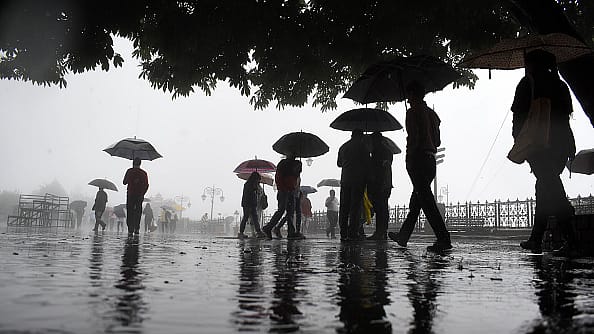India sees sharp recovery in rain; June CPI likely to remain low
ADVERTISEMENT

With the monsoon finally hitting both Delhi and Mumbai on June 25, 2023, SBI Monsoon Impact (MI) Index suggests a sharp recovery in rains in the country, even though on an overall basis rainfall is deficient. It shows the cereal-producing states have received plenty of rainfall in FY23 unlike in FY22 when it was deficient.
Given the critical impact of the southwest monsoon, the current status of shortfall (-23% below normal as compared to –7% last year, though improving sharply) and delayed arrival imparts a coefficient of fear on inflation and growth estimates, says the report, highlighting the importance of spatial patterns and distribution of rainfall.
The government’s weather agency India Meteorological Department (IMD) has also predicted a "normal monsoon" in India despite the increasing possibility of El Nino developing as El Nino alone doesn’t predict the monsoon pattern in India.
January 2026
Netflix, which has been in India for a decade, has successfully struck a balance between high-class premium content and pricing that attracts a range of customers. Find out how the U.S. streaming giant evolved in India, plus an exclusive interview with CEO Ted Sarandos. Also read about the Best Investments for 2026, and how rising growth and easing inflation will come in handy for finance minister Nirmala Sitharaman as she prepares Budget 2026.
Notably, uneven spatial distribution in select states in an ‘overall normal’ monsoon in 2022 had seen CPI food inflation increase to 6.7% from 4.2% in the preceding year. While the overall monsoon was ‘normal’, the spatial distribution was quite uneven like MP -23%, Rajasthan -36%, and Maharashtra: -23%.
But this year, the current MI Index of SBI, with the present value of 64.0 fares better than the 2022 full-season MI Index at 60.2, which means a lesser impact of the spatial distribution of rainfall on the economy.
"It strengthens our belief that better prospects of monsoon from this point should transgress MI Index towards 90, where the negative impact on the economy would be virtually nil," writes Soumya Kanti Ghosh, Group Chief Economic Adviser, SBI Research.
Within the agriculture sector, food grains production is highly reliant on monsoon performance and the performance of monsoon impacts cereals and product inflation. "Better prospects of monsoon should transgress MI Index towards 90, where the negative impact on the economy would be virtually nil."
The report says in case of prevailing El Nino conditions but supportive conditions in the Indian Ocean, there'll be no impact on real agriculture GVA, barring a worst-case scenario of an unlikely severe El Nino occurrence that could push up food prices.
On the policy front, it thinks, of the 44 central banks whose meetings took place in June 2023, only 10 central banks raised rates, while 29 went for a pause and 5 cut their policy rate. "June CPI is also expected to remain low and will be the only CPI data available before the July meeting, therefore making a case for another pause (by the Reserve Bank) in July 2023," the SBI report adds.
SBI Research's “Monsoon Impact Index” uses four parameters of 15 major foodgrain-producing states, viz. their share in total foodgrain production, rainfall deviation from normal, irrigation status, and overall skewness among states. An interplay of these four factors gives an index value in the range of 0-100. A value near 100 indicates NIL/Less impact while a value far from 100 indicates a severe impact of spatial distribution of monsoon on the Indian economy.
The IMD’s first stage forecast for the South-West monsoon rainfall for 2023 (June-September) had placed the volume of rainfall at 96%+/5% of the Long Period Average (LPA), indicating a normal monsoon (96%-104% of LPA as per IMD’s classification).
The IMD has placed the probability of normal rainfall at the highest 35%, amid a 51% chance of a below-normal and deficient monsoon in 2023. In El Nino, which typically occurs at a three to seven years interval and lasts about two years, trade winds weaken and warm water is pushed back east, toward the west coast of the Americas.
